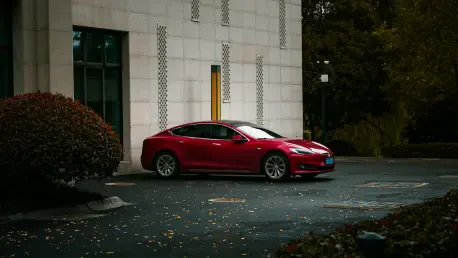Setting the Stage for Carshare Insurance Evolution
The carshare industry in the US has emerged as a cornerstone of urban mobility, with market value projected to grow from $3.1 billion in 2025 to $4.8 billion by 2034, reflecting a robust compound annual growth rate driven by urbanization and demand for flexible transportation. This rapid expansion, however, reveals a critical challenge: traditional insurance models often fall short in addressing the nuanced risks and operational intricacies of carsharing, leaving fleet owners grappling with fragmented coverage and regulatory hurdles. This market analysis examines how INSHUR, a leader in on-demand economy insurance, is reshaping the landscape through innovative solutions like Period Z and Period X™, offering a unified suite tailored to fleet needs. The purpose is to uncover key trends, data-driven insights, and future projections that highlight the transformative potential of specialized insurance in this dynamic sector.
The significance of this analysis lies in understanding how tailored insurance can act as a catalyst for scalability in a market increasingly defined by sustainability and adaptability. As fleet owners navigate diverse platforms and direct rental channels, the demand for seamless, compliant coverage has never been higher. This examination aims to provide stakeholders with a clear view of how INSHUR’s offerings align with current market dynamics and position the industry for sustained growth over the coming years.
Deep Dive into Carshare Insurance Market Trends
Current Landscape and Driving Forces
The carshare market is experiencing unprecedented momentum, fueled by a societal shift toward shared mobility as a solution to urban congestion and environmental concerns. Data indicates that millions of Americans now rely on carsharing for short-term, flexible transportation, creating a fertile ground for fleet operators to expand their reach. However, the mismatch between traditional insurance frameworks and the unique demands of this sector—such as fluctuating vehicle usage and cross-state regulatory variations—has historically hindered growth. INSHUR’s entry with a comprehensive suite combining Period Z for on-rental coverage and Period X™ for off-rental protection addresses this gap, streamlining operations for fleet owners who previously struggled with multiple policies.
Beyond operational challenges, the rise of technology-driven platforms has diversified revenue streams for fleet operators, allowing rentals through various apps and direct channels. This diversification, while lucrative, amplifies the need for adaptable insurance that can support multi-platform operations without compromising compliance. INSHUR’s nationwide solution stands out by offering a single provider framework, reducing administrative burdens and ensuring that fleet owners can focus on growth rather than policy management. The trend toward integrated insurance solutions is becoming a defining feature of the market, signaling a shift away from fragmented coverage models.
Growth Projections and Emerging Opportunities
Looking ahead, projections from 2025 to 2034 suggest that the carshare market will nearly double in value, driven by increasing urbanization and a growing preference for sustainable transportation alternatives. This trajectory presents significant opportunities for fleet operators to scale, provided they have the right support systems in place. INSHUR’s unified insurance suite is poised to play a pivotal role, enabling operators to expand across regions and platforms with confidence, knowing their coverage adapts to diverse operational needs. The flexibility to operate without being tied to a single rental platform is a game-changer, fostering resilience in a competitive landscape.
Another key opportunity lies in the integration of technological advancements, such as telematics, which can provide real-time risk assessment and enhance insurance precision. As the industry evolves, the potential for regulatory shifts favoring shared mobility could further accelerate market expansion, creating a more favorable environment for fleet growth. INSHUR’s proactive approach in anticipating these changes—through tailored products and strategic alignments—positions it as a leader in capitalizing on emerging possibilities, ensuring that fleet operators are equipped to navigate future complexities.
Regional Dynamics and Competitive Challenges
The carshare market is far from uniform, with regional disparities in regulations, consumer behavior, and infrastructure shaping distinct operational challenges. For instance, fleet owners in densely populated states like California face different compliance requirements compared to those in less urbanized regions like Texas, necessitating insurance solutions that account for such variances. INSHUR’s ability to offer customized support across states mitigates these issues, ensuring that operators remain compliant regardless of location, a critical factor in maintaining operational stability in a decentralized market.
Competitive pressures also loom large, as fleet operators must balance the push for expansion with the risk of overextending without robust frameworks. The historical reliance on fragmented insurance has often led to inefficiencies, a pain point that INSHUR directly addresses with its cohesive suite. By reducing the friction of managing multiple providers, the company not only enhances efficiency but also sets a benchmark for competitors, pushing the industry toward more integrated and scalable solutions. This competitive edge is vital as the market continues to attract new entrants vying for a share of the growing pie.
Strategic Partnerships and Industry Innovation
A notable trend shaping the carshare insurance space is the role of strategic collaborations in bolstering product reliability and market reach. INSHUR’s partnership with Incline P&C Group, a prominent insurance program carrier, exemplifies this, providing the financial stability and expertise needed to sustain an ambitious suite of offerings. Such alliances are crucial in an industry where trust and dependability are paramount, ensuring that fleet operators can rely on consistent coverage even as they scale operations across diverse geographies.
Innovation also plays a central role, with INSHUR staying ahead of industry disruptions by aligning its solutions with broader trends like sustainable mobility. The push for greener transportation options is influencing consumer preferences, and insurance products that support eco-friendly fleet practices could become a differentiator. By embedding flexibility and forward-thinking design into its offerings, INSHUR is not only meeting current demands but also paving the way for future innovations that could redefine how insurance supports shared mobility ecosystems.
Reflecting on Market Insights and Strategic Pathways
This analysis reveals that INSHUR has carved a significant niche in the carshare insurance market by addressing longstanding operational inefficiencies with a unified suite of Period Z and Period X™. The company’s focus on flexibility, scalability, and regional compliance has positioned it as a frontrunner in supporting fleet owners amid a projected market surge to $4.8 billion by 2034. Moreover, strategic partnerships have provided a foundation of stability, ensuring that innovation is backed by reliability—a critical factor for sustained growth.
For fleet operators and industry stakeholders, the path forward involves leveraging integrated insurance solutions to diversify rental channels and mitigate regulatory risks, taking a cue from INSHUR’s model. Exploring technological tools like telematics for enhanced risk management emerges as a practical next step to stay competitive. Additionally, aligning operations with sustainability goals offers a chance to resonate with evolving consumer values, potentially unlocking new market segments. These strategic considerations mark a roadmap for navigating the complexities of an ever-changing carshare landscape with confidence and foresight.









